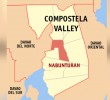By design and by default, enclosed concrete spaces heavily secured in built structures exclude. Insiders isolate themselves from the wild natural world outside. They validate each other’s truths and cement their beliefs, so they only receive dubious outsiders, who undergo security checks, satisfy decorum requirements and speak the language. Voices harmonize and synchronize in unison conjuring delusions of grandeur and visions of the future under the industry they thought they have built with their own hands. Their noble vocation, essential. Their technological knowledge, absolute. Their corporate confidence, intact. Thus, they tremble and panic when proven wrong.
The walled echo chamber that svelte insiders trusted to be impenetrable ended up shattered. Their mines were never theirs. The resources they plundered belong to generations of indigenous peoples across the archipelago, who are now in solidarity and are standing up as “national minorities”. Setting aside cultural differences, they unite as Sandugo (one blood), a national alliance of Moro and indigenous peoples who marched to the capital to share the lives and struggles of indigenous communities existing in the fringes of Philippine society.
Through the Pambansang Lakbayan 2017 (national caravan), they assert their right to ancestral domain and self-determination. They demand the end of martial law in Mindanao as this has increased military presence and is aggravating their situation. Repressive state forces function as private guards of haciendas, large-scale logging territories and corporate mining.
Last September 6, Sandugo and Kalikasan People’s Network for the Environment raised their concerns through a protest action at Sofitel, which housed the Mining Philippines 2017 Conference of the Chamber of Mines of the Philippines (COMP). They breached human and concrete barricades and surpassed labyrinthine rerouting schemes to issue mining order closure and open pit ban, as reported in Bulatlat.com. Earlier, as reported by DavaoToday, Sandugo staged a protest at the House of Representatives to convince policy-makers to give zero budget to the National Commission on Indigenous Peoples (NCIP) that allegedly remains untrue to its mandate; the alliance also joined forces with Save Our Schools Network (SOS) and trooped to the Department of Education that allegedly failed to act on harassments affecting Lumad schools.
Activities advancing the struggles of the national minorities held inside and outside the Kampuhan (camp) are scheduled until September 21. Far from air-conditioned rooms of government agencies and corporate institutions, the open-air learning area within the University of the Philippines has welcomed supporters, visitors, and, hopefully, advocates and volunteers.
Somehow, universities tend to coddle chambers of mines, i.e. disciplines that accept their theories as dogma; students that parrot the faiths of their teachers; and professors that monopolize their relative truths, utilize what Paulo Freire calls banking model of education, and reproduce conditions of production that further marginalizes vulnerable sectors of society. For instance, students who anticipate their profession within the mining industry, as young as they are, mouth catchphrases of what they blindly believe to be gifts of “responsible” large-scale mining: “corporate social responsibility,” “employment and scholarship opportunities,” “development projects,” among other terms that hypocritically care for the humankind. Thus, their matter-of- factly messianic complex of teaching far-flung communities about the righteous tenets and responsible practices they learned from their professors, who most probably serve as consultants of mining corporations. Seeing a career ahead of them, these students speak against indigenous methods of gathering resources, most of which are small-scale and sustainable, since most indigenous peoples only take what they need at the moment, no more and no less.
Unlike corporations that reap excessive profits and leave toxic wastes behind, indigenous peoples highly regard nature and possess profound wisdom about the environment. They have deep relationship and respect for the land that nourished their ancestors and that shall sustain their children in the days to come, together with endangered breeds of animals and species of plants. The peoples of the forests, the lands and the seas practice theories and theorize practices that university students will not easily comprehend, as they were caught (but hopefully not trapped) within the echo chamber of their classrooms.
Aerial photos of devastated and flattened mountains due to environmental plunder sometimes cannot get through the wired minds of students who believe in the salvation sold by mining. In contrast to enclosed concrete buildings made of metals from mines and rendered operational by power plants and dams, the modest Kampuhan hosts energy-efficient makeshift tents, where voices will never reverberate. Unlike exclusive halls that tolerate monologue among like-minded insiders, the camp welcomes outsiders (lowlanders and colonials) to dialogues about changing society and challenging hegemonic powers. Permanent structures impose their presence and absolutes, while tents exist as temporal, humble zones conducive for integrating and exchanging emancipatory ideas from different people from various walks of life.
We may walk with them home, live their lives, and listen to voices other than echoes of our respective social class and mines that are not ours. Some words deserve a timely echoing, like the saying, “we don’t inherit the earth from our ancestors, we borrow it from our children;” and, invoking the spirit of Kalinga chieftain Macliing Dulag, the rhetorical question: “how could you own that which will outlive you?”










